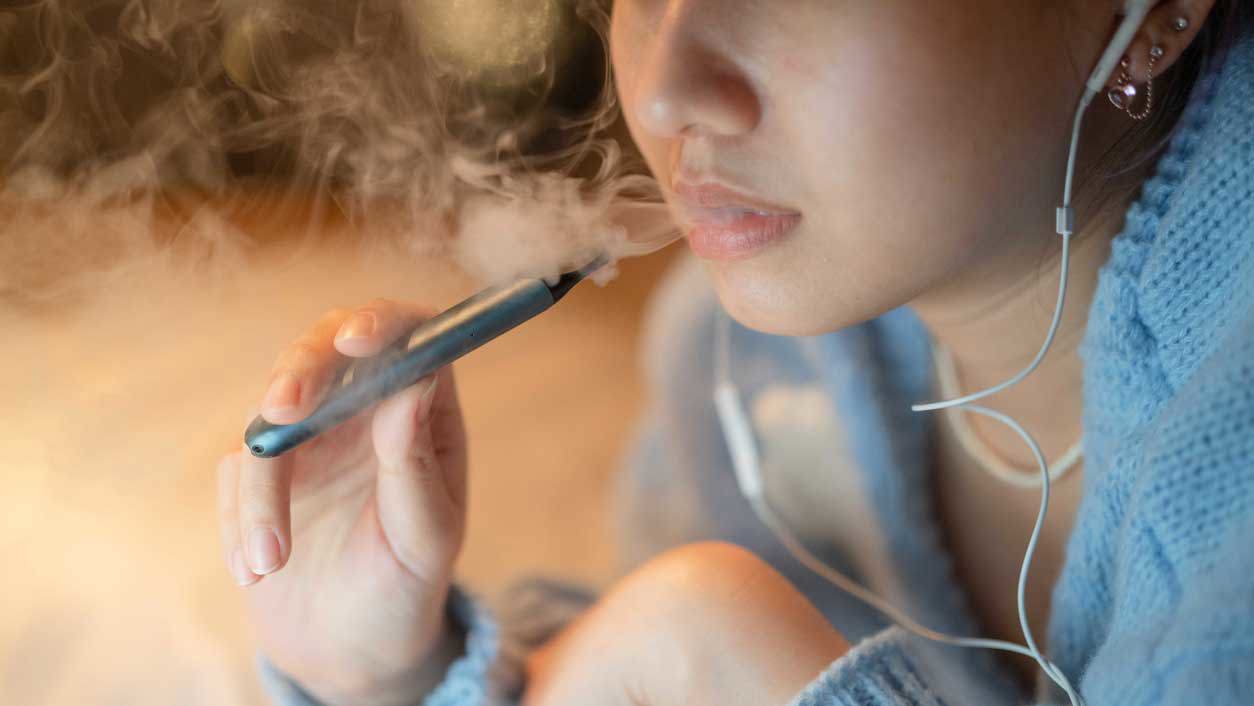
Aussie teens are five times more likely to try smoking after vaping, according to new research published today.
The effect is even more pronounced for younger adolescents. Twelve-year-olds who have vaped are 29 times more likely to then pick up a cigarette.
The research was conducted by the Daffodil Centre, a joint venture between Cancer Council NSW and the University of Sydney, and published in the Australian and New Zealand Journal of Public Health.
READ MORE: Children as young as six caught vaping in schools
The study draws on survey responses from more than 5100 teenagers collected in 2023, before Australia’s tough new laws that effectively make vaping illegal without a prescription came into effect on July 1.
“It’s the first Australian study to look at the relationship between teenage vape use and smoking over time, and across different ages,” lead author Sam Egger said.
“Even after accounting for other factors that could influence the likelihood that a young person would try vapes or tobacco, we found that teenagers aged 12-17 who had vaped are five times more likely to start smoking in the future than those who had not.”
Under the new laws introduced in July, vapes can now only be bought at pharmacists, and you need a prescription to buy them.
There are restrictions placed on the flavours, nicotine content and packaging allowed.
From October 1, things will change again – the need for prescriptions will be scrapped for adults, but vapes will be treated as behind-the-counter therapeutic goods and only sold at pharmacies.
Children aged under 18 will still require a prescription from their doctor to buy a vape even after October 1.
READ MORE: Warning over cannabis gummies circulating ACT after child hospitalised
Associate Professor Becky Freeman, study supervisor from the University of Sydney, said the study reinforced why the national vaping reforms were urgently needed and needed to be strongly enforced.
“When it comes to teenage smoking, up until recently Australia was an international success story,” Freeman said.
“Our Australian teenage ever-smoking rates dropped from 58 per cent in 1996, to 14 per cent in 2023.
“Public health experts have warned that teenage vaping uptake has the potential to undo the positive progress Australia has made in reducing smoking. This latest study shows how real that threat is.
Young people generally saw vaping as a completely different behaviour to smoking, which they considered as unattractive, making them unaware of the risks, Freeman said.
Social media influencers sway vaping attitudes
Another Australian study released this week showed the influence of social media posts on how young people viewed smoking and vaping.
The University of Queensland research, published in the American Journal of Preventive Medicine, assessed the survey responses of more than 5600 young people who didn’t smoke or vape, and who used social media in the previous month.
“Sixty-one per cent reported being exposed to tobacco or e-cigarette content on social media, and approximately 28 per cent reported being curious to try a nicotine product,” lead author of the study Dr Carmen Lim said.
Lim said the promotion of tobacco products through paid influencer endorsements, often without disclosure of financial interest, played a significant role in normalising and glamourising tobacco use.
Tougher strategies were needed to limit the promotion of pro-tobacco content on social media platforms, Lim said.
“Enhancing age verification systems on social media to ensure minors are less likely to encounter pro-tobacco content is a good place to start,” she said.
“It’s also important to have clear disclosure of sponsorships, so audiences can make more informed decisions about the content they consume.
links to content on ABC
9News





